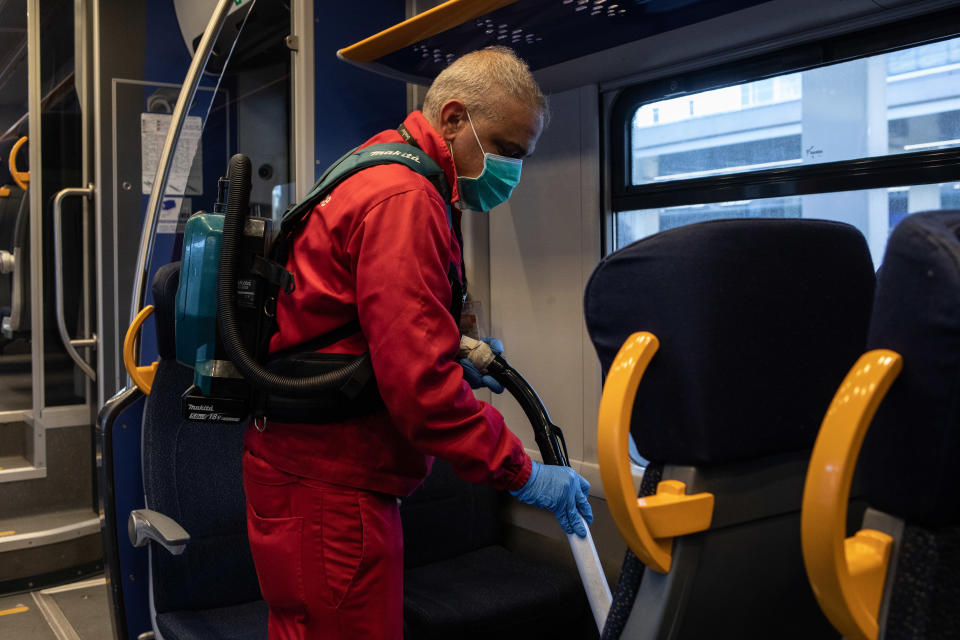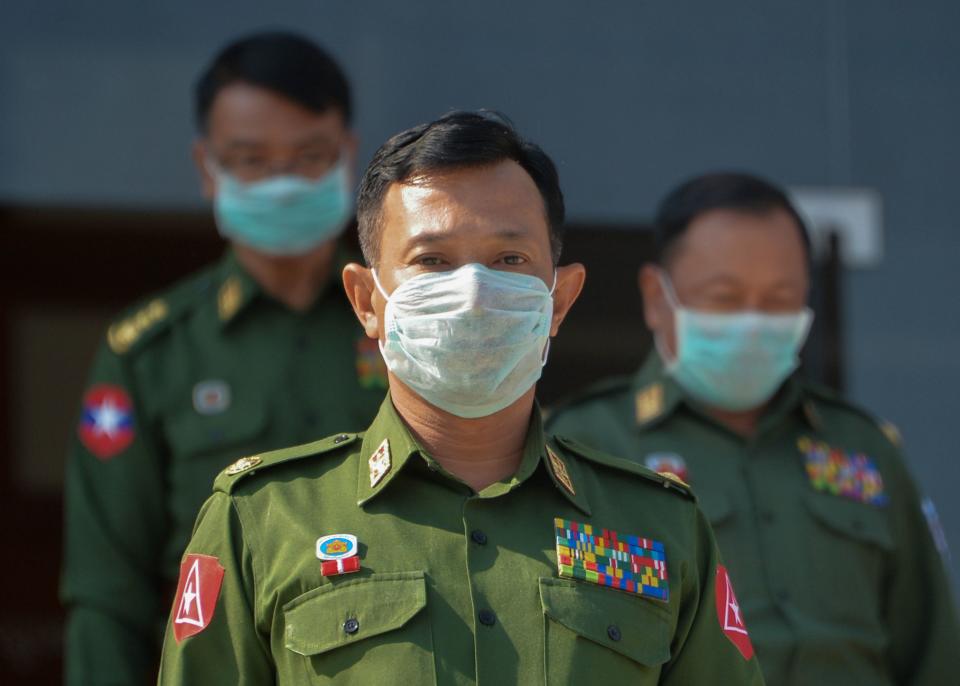Coronavirus death rate higher than previously thought, World Health Organization says

The coronavirus has killed 3.4% of patients globally, according to the World Health Organization (WHO).
This is higher than previous estimates, which predicted around 2%.
Experts have been quick to say the new figure is likely an “overestimate”, with milder cases that do not require treatment potentially going unreported.
Read more: Could the coronavirus spread on public transport?
Some said a 1% death rate seems more “reasonable”.

Since emerging at a seafood and live animal market in the Chinese city if Wuhan at the end of last year, the coronavirus strain Covid-19 has spread to more than 60 countries.
Over 93,000 cases had been confirmed globally on Wednesday, of which 80,270 were in mainland China, according to John Hopkins University data.
Incidences appear to be plateauing in China, making some optimistic the outbreak may have “peaked” in its epicentre.
It is on the rise elsewhere, however, with South Korea alone having more than 5,600 confirmed cases and 32 deaths.
Read more: Should humans limit their contact with animals to prevent further outbreaks?
Italy is faring worst in Europe, with over 2,500 incidences and 79 fatalities.
In the UK, out of more than 13,900 tests, 51 have come back positive.
One British man died after catching the infection aboard the “hotbed” Diamond Princess cruise ship.
Globally, the death toll exceeded 3,100 on Wednesday.
While the figures may sound alarming, four out of five cases are thought to be mild, while more than 50,000 patients have “recovered”.
Of the countries with confirmed cases, 21 have just one patient, while 122 nations are yet to report any.
What is the coronavirus’s death rate?
Speaking at a media briefing on Tuesday, WHO’s director-general Dr Tedros Adhanom Ghebreyesus said: “Globally, about 3.4% of reported Covid-19 cases have died.”
Calculating the death rate in the midst of a new outbreak is far from straightforward.
Death rates are generally defined as the percentage of fatalities among the number of cases.
This is different from the death toll, which gives the number of fatalities.
On 29 January, the WHO cited a likely death rate of 2%.
Just a few days later, the Chinese National Health Commission reported it appeared to be 2.1%, based on 425 deaths among 20,438 confirmed cases.
On 20 February, a WHO-China joint statement put the death rate at 3.8% based on 2,114 deaths among 55,924 cases.
With Covid-19 virtually unheard of at the beginning of the year, its death rate was initially estimated according to hospital data.
Patients who require hospital treatment are severe by definition.
Milder cases – who may experience fever, cough and breathlessness – could have gone unreported.
“We do not report all the cases,” said Professor John Edmunds from the London School of Hygiene and Tropical Medicine.
“In fact, we only usually report a small proportion of them.
“If there are many more cases in reality, then the case-fatality ratio will be lower.
“Estimating what fraction of the cases might be reported is very tricky.
“This long-winded explanation goes to show how difficult it is to get an estimate of the death rate.”
Dr Toni Ho – from the University of Glasgow – agreed, adding some countries have “limited testing” when it comes to diagnosing mild or asymptomatic patients.
“This [3.4%] is likely an overestimate as a number of countries have had limited testing,” he said.
“Hence few of the mild cases have been picked up and [the cases] we are observing is the tip of the iceberg.
“Furthermore, determining mortality using confirmed deaths over total cases does not account for the fact that outcome is still unknown for many confirmed cases, as they are still hospitalised.
“Lastly, since subclinical [an infection not severe enough to cause “observable” symptoms] and asymptomatic infections have been reported, [the] true case-fatality ratio cannot be estimated until population surveys can be undertaken to estimate the proportion of individuals that were infected but did not manifest symptoms.”
“Population surveys” refers to testing the public for an antibody protein produced by the immune system in response to the infection.
Read more: Could antibacterial hand sanitisers protect against the coronavirus?
Referring to asymptomatic cases, Dr Ghebreyesus said in Tuesday’s media briefing: “Evidence from China is only 1% of reported cases do not have symptoms and most of those cases develop symptoms within two days”.
Taking into account those with mild or no symptoms, Dr Christl Donnelly – from Imperial College London – estimated a 1% fatality rate appears more likely.
“In an unfolding epidemic it can be misleading to look at the naïve estimate of deaths so far divided by cases so far,” she said.
“The infection-fatality ratio is the proportion of infections (including those with no symptoms or mild symptoms) that die of the disease.
“Our estimate for this is 1%.”

Dr Tom Wingfield, from the Liverpool School of Tropical Medicine, also pointed out that the definition of a Covid-19 case is not always clear-cut.
This was shown when China changed its definition to “definitely infected” if a patient presented with symptoms, alongside a CT scan showing a chest infection.
Beforehand, patients were confirmed via a nucleic acid test. Nucleic acids are substances in living cells, making up the “NA” of DNA.
As a result, cases appeared to spike overnight in mid-February, despite one expert stressing it was “solely an administrative issue”.
Death rates can also change over the course of an outbreak.
This may be due to mutations within the virus making it more or less “potent”, as well as humans potentially developing immunity or becoming less exposed to the infection due to quarantines and other interventions.
A lack of awareness at the start of the outbreak may also have meant patients only sought treatment when their symptoms became severe.
Death rates may reduce as patients start “self-identifying” their symptoms earlier on.
“The best estimates of case-fatality rates would have to occur once an epidemic was over,” said Dr Wingfield.
“Estimating in real time during the epidemic is fraught with difficulties”.
Dr Paul Hunter of the University of East Anglia agreed, adding: “In my view, 1%-to-2% is a reasonable estimate”.
This is not the first time Covid-19’s suspected case-fatality rate has sparked a debate, with experts questioning how many could become infected and the number that will go on to die.

What is the coronavirus Covid-19?
Covid-19 is one of seven strains of the coronavirus class that are known to infect humans.
Others include the common cold and severe acute respiratory syndrome (Sars), which killed 774 people during its 2004 outbreak.
In severe cases, pneumonia can come about when the infection causes the alveoli (air sacs) in the lungs to become inflamed and filled with fluid or pus.
The lungs then struggle to draw in air, resulting in reduced oxygen in the bloodstream.
“Without treatment the end is inevitable,” said the charity Médecins Sans Frontières.
“Deaths occurs because of asphyxiation.”
Covid-19 is thought to have started in bats before “jumping” into humans, possibly via snakes or pangolins.
There is no specific treatment, with care being “supportive” while a patient’s immune system works to fight off the infection.
Officials recommend regular hand washing and “social distancing” to ward off the infection.


